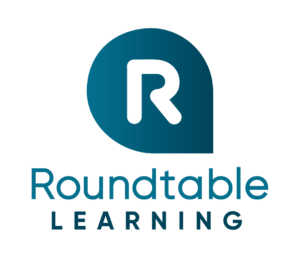What Is Reboarding And Why Is It Important?
Reboarding, also known as re-onboarding, brings a previously furloughed, laid-off, or remote employee back into their role at their organization. In general, reboarding helps returning employees get reacclimated to their role and workspace by outlining expectations of their position.
While reboarding looks different across organizations, this process typically involves the following steps:
- Refamiliarize the employee with the expectations of their role
- Update the employee on current standards, policies, and guidelines that may have changed while they were gone
- Acclimate the employee to their new team cultures, relationships, and projects
Reboarding is important for an employee’s productivity and emotional stability. When reintroduced to their organization, employees will have a clearer understanding of the expectations of their role, which is critical to reaching high efficiency, confidence levels, and success. In addition, reboarding helps employees feel more welcomed and engaged with their coworkers, work environment, and organization as a whole.
Without reboarding, organizations risk wasting their time and resources, while potentially creating a disconnect [1] among their employees.
4 Tips To Successfully Reboard Employees
1. Outline A Return To Work Plan
When employees return to work, they may experience a mix of emotions, such as nervousness and anxiety. To relieve these feelings, organizations should designate a team to create a return to work plan that helps ease the burden. Each organization will have a unique return to work plan, but the ultimate goal remains the same: help employees get acclimated to their regular duties in a specified time frame.
By gathering a mix of employees [2] from HR and other departments, your organization can develop, implement, and track a return to work plan that’s agile and considerate of your workforce. In doing so, your organization’s return to work plan will instill confidence in your employees and prepare them for their return.
2. Distribute Support Resources
As part of your organization’s return to work plan, you should designate a team to help create and distribute support resources to employees once they’re back in the office. These support resources can include any of the following:
- Updated policy documents (e.g., payroll information, updated employee directory, seating and organizational chart)
- Relevant safety information (e.g., location of fire exits, emergency protocols)
- Frequently Asked Questions sheets
- Mental Health resources list
These support resources will help employees with their transition back into their role, while also demonstrating the commitment your organization has to their professional and emotional well-being.
3. Create A Role-Specific Training Activity
For some returning employees, it may have been months or even over a year since they’ve performed their regular tasks. Through role-specific training activities, your organization can equip your employees with the knowledge and skills needed to perform their job efficiently.
A modern way to train employees through safe, hands-on activities is to use future learning technologies, including augmented reality (AR) and virtual reality (VR). Consider the following examples:
- AR activity for equipment training
Through their mobile device or tablet, learners simply scan a flat surface in front of them and tap their screen to place a digital model of equipment. Once placed, learners can explore each individual part, troubleshoot problems, and practice operating the object through interactive exercises. - VR activity for diversity and inclusion (D&I) training
Use VR to teach employees updated D&I policies and develop their soft skills, such as communication and empathy. Via headset, mobile device, or desktop, learners witness a discriminatory remark during a meeting and must decide how to proactively respond according to their organization’s expectations.
These activities are an engaging way to test an employee’s existing knowledge and develop additional soft and hard skills that benefit their work performance.
4. Clarify Goals And Responsibilities
As employees return to work, your organization should make sure your goals and the responsibilities of each employee are clear, especially if their duties have changed. Through honest, consistent communication, your organization can provide each employee with an overview of their responsibilities and map out how their work meets these objectives.
Your organization can clarify goals and responsibilities through weekly emails, digital newsletters, and video messages between teams. Your HR team, department heads, and marketing team can work together to outline these goals and drive them home through content that captures the attention of your workforce. When employees receive this content, they’ll likely feel more encouraged to raise questions and concerns that leaders can address appropriately.
Ready, Set, Reboard!
Now that you know the basics of reboarding, are you ready to bring your employees back up to speed successfully? We hope that you’ll consider our 4 tips to ensure your reboarding program supports more efficient, productive, and confident employees.
References:
[1] 5 Tips for Reboarding Employees After a Furlough
[2] KEY CONSIDERATIONS IN DESIGNING A RETURN TO WORK PLAN










